The Cameradactyl OG is a camera I have been meaning to write about since, well, ages ago (sorry Ethan). It’s also my first large format camera review, and indeed the first large format camera review on 35mmc. Though thanks, at least in part to this experience, it won’t be the last!
I do have a valid excuse for my tardiness when it has come to reviewing the Cameradactyl OG, well, sorta… I took it with me to John ‘TheDarkShed’ Whitmore’s house when I went to visit him sometime last year. We went out taking photos with it, I enjoyed the experience and felt I had enough to write about it so left it with him to play with.
I subsequently changed my mind about that and somehow locked in the idea that I wanted to shoot a few more frames with it before writing about it. Then Covid happened which made getting it back more complicated. And now it’s now, ages later, and I’ve just got around to writing about it. I promise there is a valid excuse in there somewhere! (Sorry Ethan)
A bit of background
Anyway… Let’s start from the beginning. A long, long(!!), time ago I was contacted by a slightly strange bearded man who goes by the name of Ethan. For some reason this guy owns a lot of pairs of apparently slightly badly shaped jeans – though I’m not going to get into that as it’s not really relevant to this story. What is relevant is that Ethan is one of these clever folks who owns a load of 3D printers and makes all sorts of cool stuff with them. This stuff ranges from camera grips to designs for bits for medical ventilators, and everything in between. You can find loads of pictures of his 3D printing antics on his IG accounts for Cameradactyl and Butter Grips.
Slightly closer to the camera grip end of that spectrum are his large format cameras. One of which is the Cameradactyl OG. In fact, if you want to go back a bit further in Ethan’s camera designing history, you might also be interested in this one that he raised money for on Kickstarter. And then there’s this other medium format camera he raised money for on Kickstarter too… and then released the files for so anyone could build one (don’t worry, that was part of the deal with the Kickstarter).
Hopefully I’ve painted a pretty good picture of this guy by now. He’s clever, he makes stuff, he gives away the designs for a lot of stuff he makes, he has a good heart and a social conscience… and a lot of pairs of jeans for some reason (again, that bit isn’t relevant). Of course, all this stuff about how great Ethan is just adds to how much of an arse I am for taking so damned long to talk about the Cameradactyl OG on this website (Sorry Ethan).
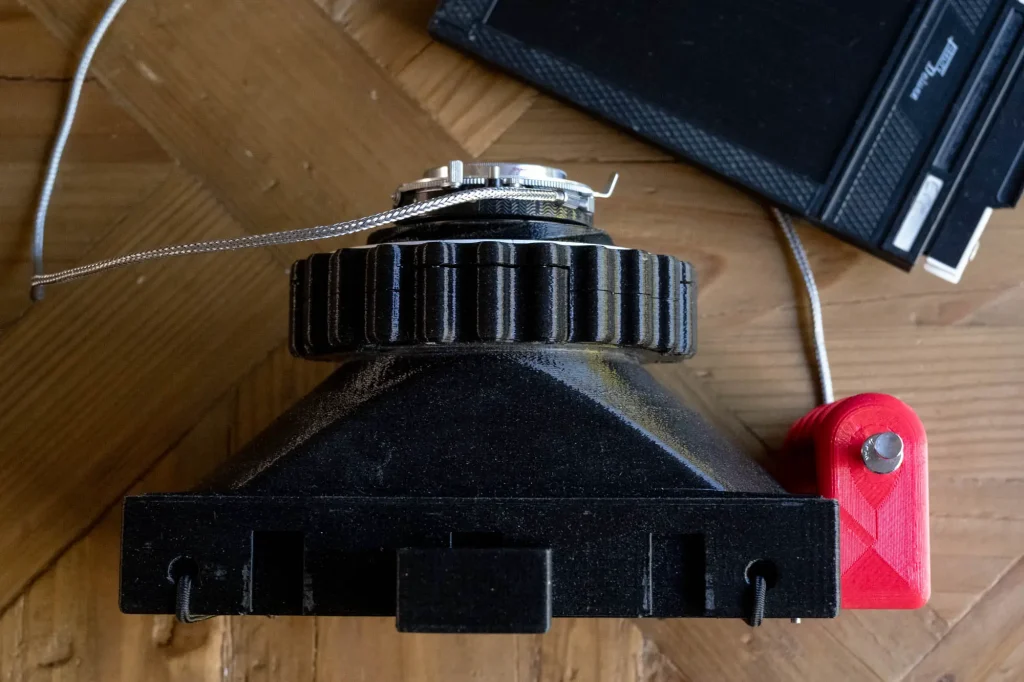
The Cameradactyl OG first outing
Anyway… we’re here now. So, on to the trip to John’s house. The idea was simple. I would go to John’s house, we would take John’s Chroma and my Cameradactyl OG for a walk in the woods, then go back to John’s ‘Darkshed’, develop the film, and print my fist large format prints. What could go wrong?
Well, the second half of that bit actually went very well. Printing large format at John’s house was the easy bit. The hard bit was taking the photos. Though I should add, that was nothing to do with the Cameradactyl OG, and everything to do with the fact that we forgot to take some of the slightly more vital pieces of the puzzle with us (John left his lens and tripod mount at home).
The result of this was that we weren’t able to use John’s camera at all, and we also weren’t able to mount the Cameradactyl OG to the tripod – which was less than ideal with an f/6.8 maximum aperture lens and 400 ISO film in a dark wood. Still, we made do. In fact, I would go as far as to say that the slightly overly simplistic nature of the Cameradactyl OG saved the day.
After a bit of a walk around the woods where we (me mostly) continued to make a wide range of silly mistakes, we returned to John’s place, developed our sheets of film, and then set about printing from one of the negs. I’m not going to get into too much detail about this, as it’s not the point of this article. But quite genuinely, it really surprised me how easy it was to shoot, develop and print 5×4 film with only a little bit supervision from John. Ok, he does have a darkroom that’s kitted up to the hilt, and of course he is very experienced in all of the relevant areas – which certainly helps. But even with the very little experience I have in the darkroom, I didn’t find it to be particularly overwhelming. But, as I say, that’s not really the point of this article. If you want to get more of an insight into that whole experience, you can watch this little video from the day.
Just please note, it’s slightly sweary, so if you’re offended by overuse of the f-bomb, it might not be for you.
Photos from the first outing

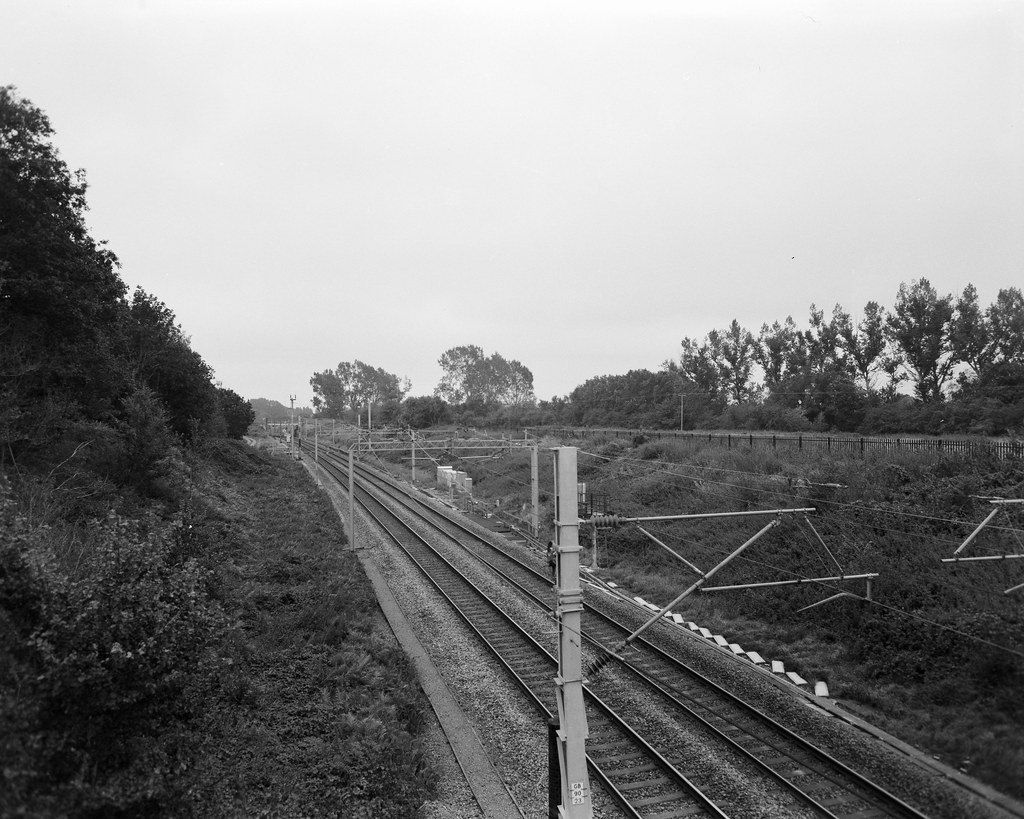
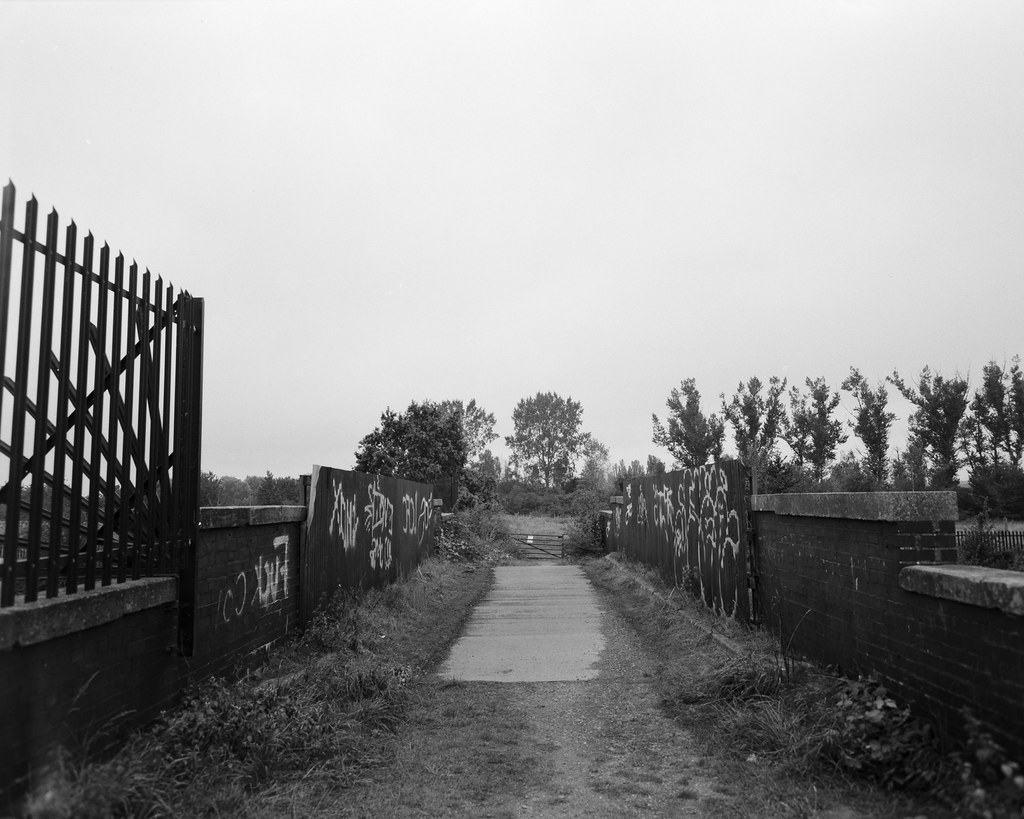
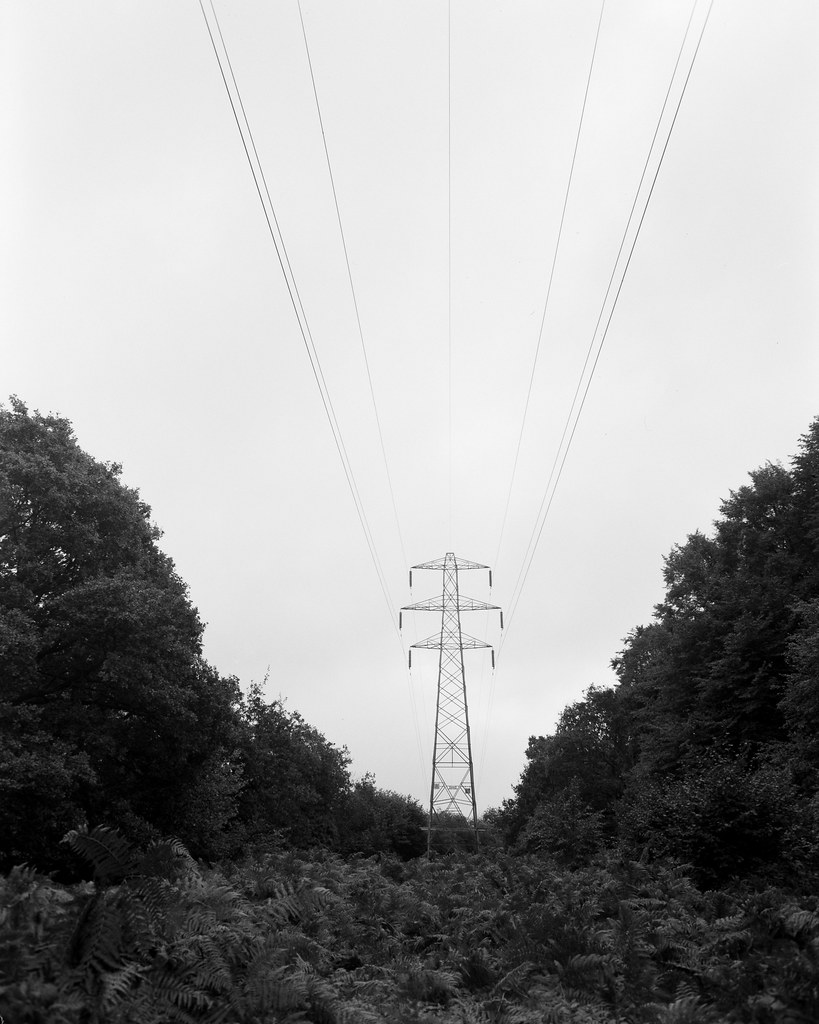
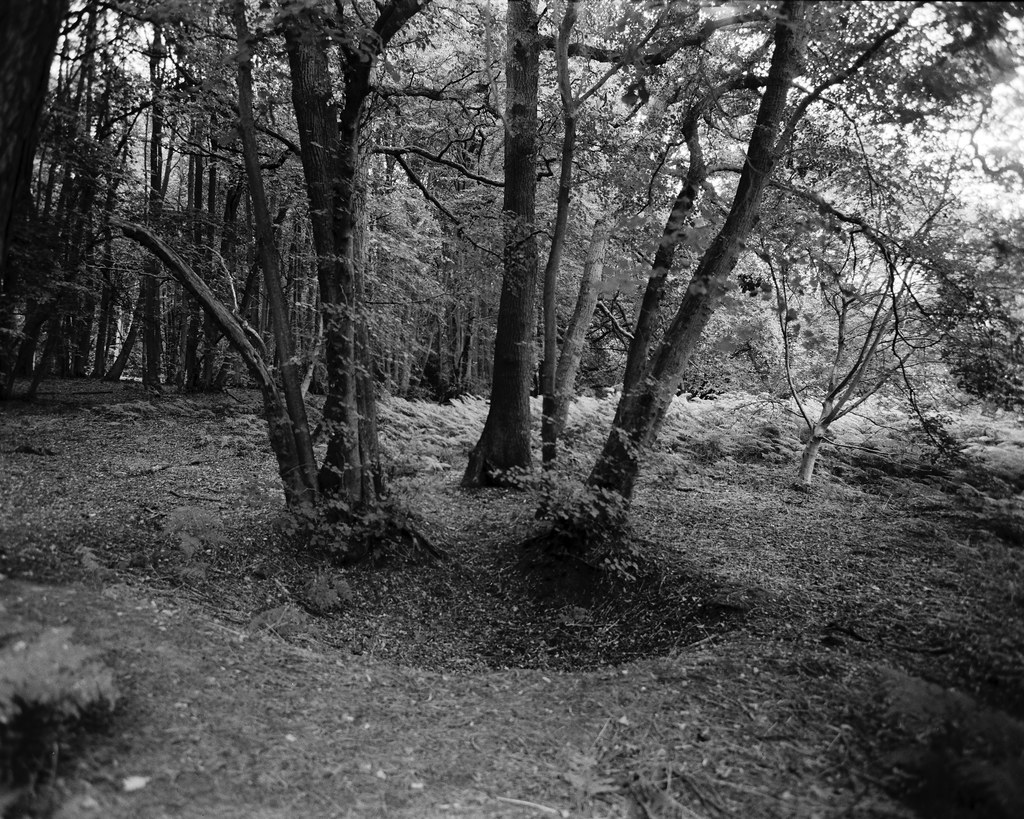
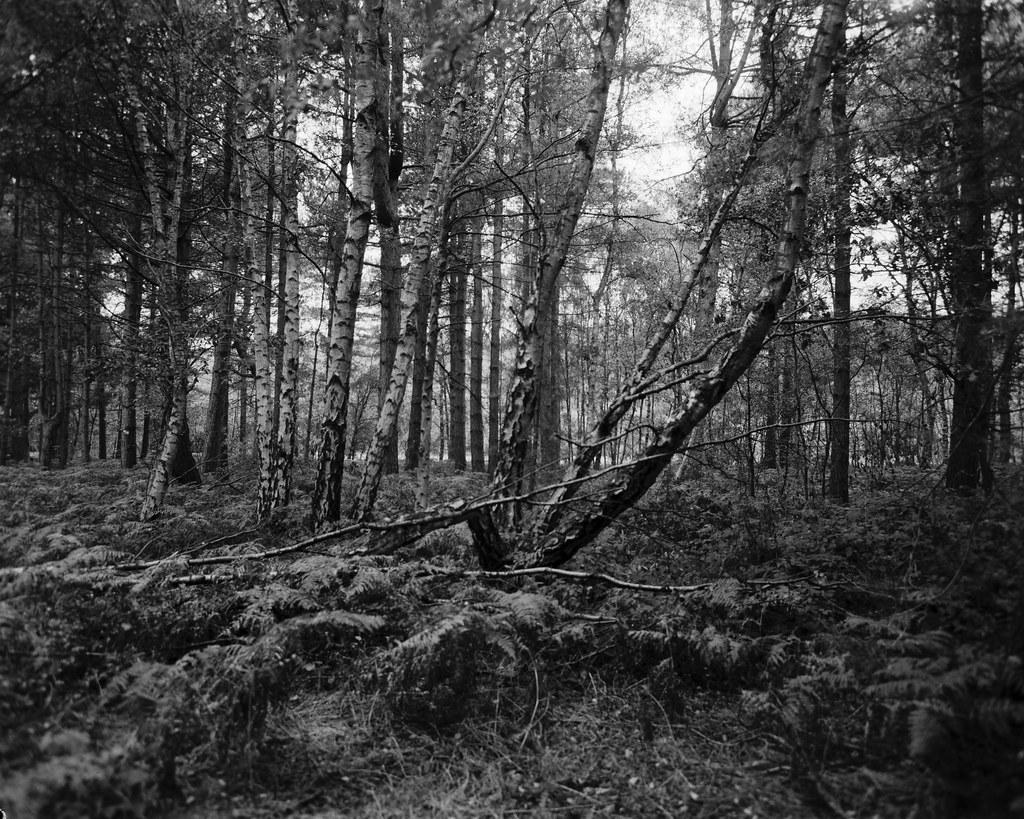
Back to the Cameradactyl OG.
The real reason I decided that I wanted to have another go with the Cameradactyl OG before writing about it is that when I went out with John I didn’t feel that I did it complete justice in terms of the reason I wanted the thing in the first place.
The Cameradactyl OG, by its nature, is a camera that can and should be used as a large format snapshot camera. It’s true that I did take some handheld images with it when out with John, but I didn’t feel like I’d managed to fully embrace the camera on the first outing alone. Perhaps it was something of the gravity of having not shot large format for a while, or maybe just that it was its first an only outing with the camera. Either way, I wanted to give it at least one more go before I put thumbs to iPhone and wrote this article. I’m glad I did too, as going out with it again, I enjoyed myself quite a bit, and it’s really bumped my appreciation for shooting the format!
The Cameradactyl OG in use
The Cameradactyl OG is an almost absurdly simple camera. My 90mm and the film does most of the heavy lifting. The camera between the two is effectively just a 3D printed cone with a helical for focusing the lens on the front and a slot for the DDS film holder and basic focusing on the back.
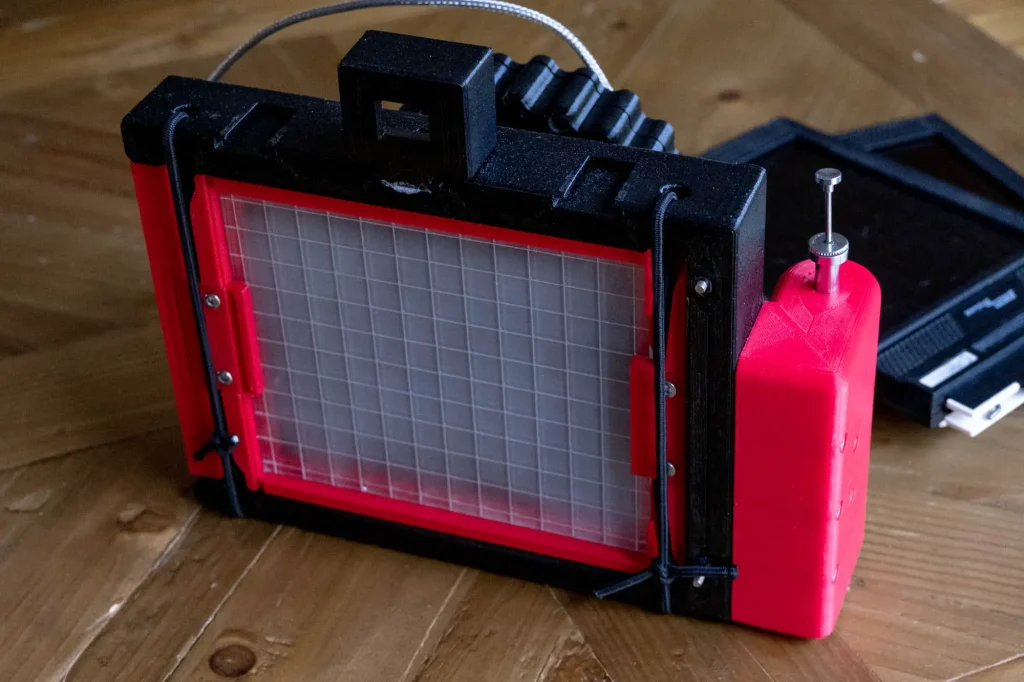
Ok, being fair to it, there is also a locking screw on the helical to lock in focus, a grip with a hole for inserting a cable release, some cold shoe mounts for accessories such as the viewfinder included with mine, and a tripod thread on the bottom, but that’s about it. Actually, that said, I did send my lens to Ethan and have him stick a laser engraved focusing scale to the front of mine. But that really is it.
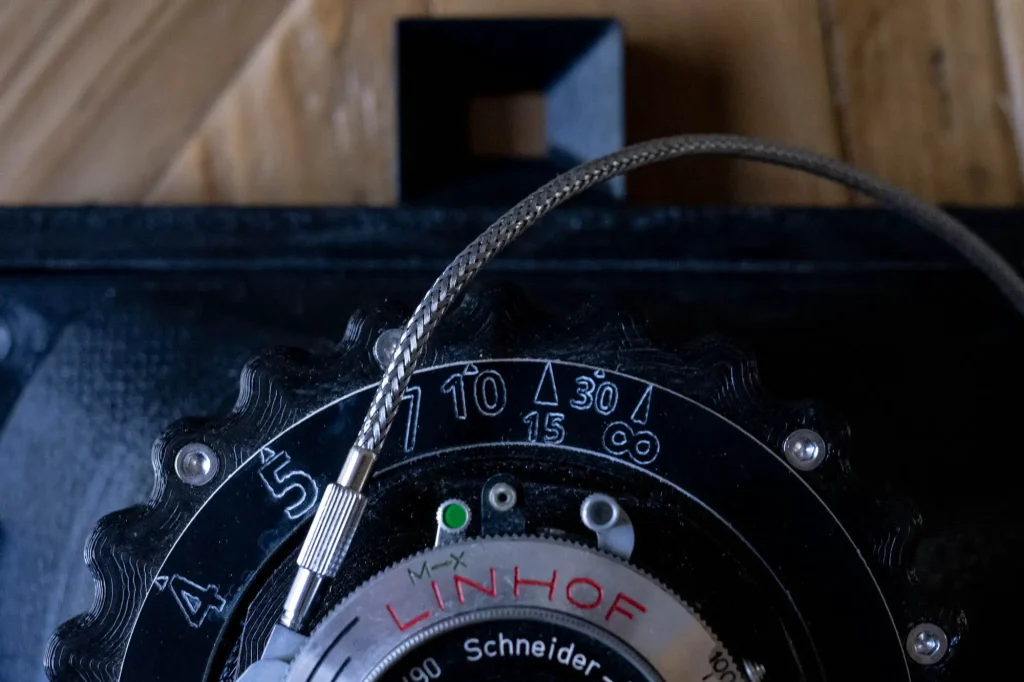
In all honesty, the focusing screen that came with my Cameradactyl OG is not the best I’ve ever used – though having spoken to Ethan he tells me that this is because I have the acrylic version which isn’t really intended to be used in the field, and is more just for presetting the lens or calibrating it to a focusing scale. If you want to use the focusing screen in the field, you’re better off choosing the ground glass version in the checkout – though Ethan also makes the very good point that the acrylic on is less fragile meaning it can be just chucked in a backpack without any fear of it breaking whilst out on a hike, for eg.
Whichever one you might feel is right for you, mine has the acrylic one. As such, as you’ll see in the video (if you can brave the swearing), when out in the woods I really struggled to use it to check focus. Instead, I relied on the focusing scale.
For my more recent experience – not least because the laser engraved scale isn’t a standard feature – I decided to use the screen instead. So, knowing it might be a little difficult to use in the field, I used the screen to preset and lock in the focusing before I left the house.
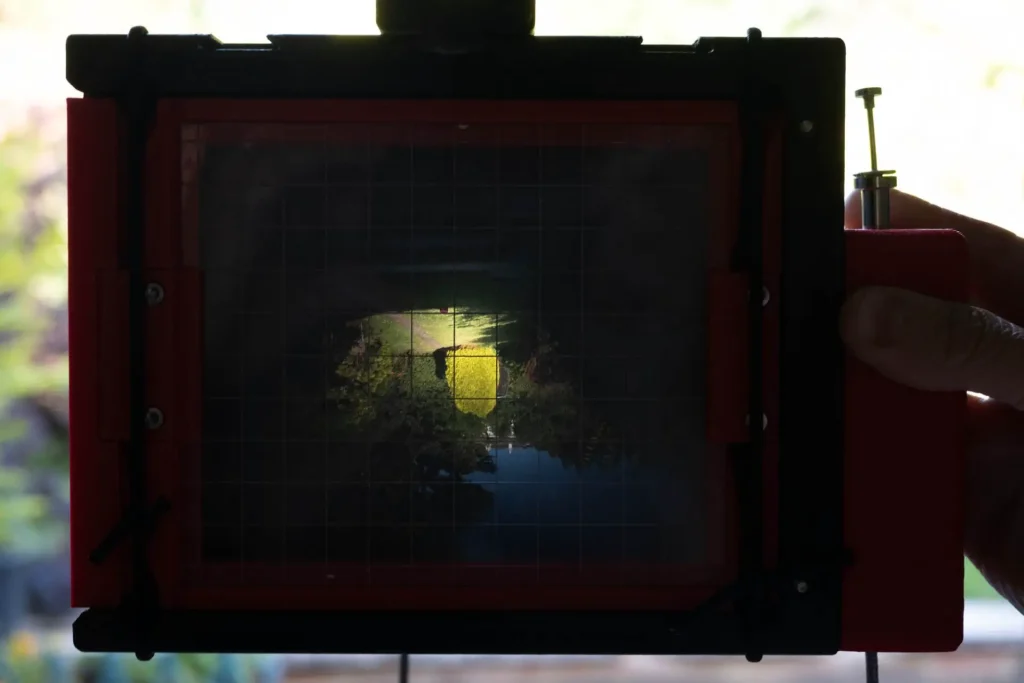
It was a bit of a cloudy day, so with me wanting a little bit of depth of field, I set the lens to f/16 and the shutter to 1/100th. With 400iso Ilford HP5+ in there I knew that these would give me pretty decent exposure provided I didn’t find myself in the in the shade of a tree. In practice, that worked quite well too. As much as anything else, it just meant that I could think about composition without having to worry about focusing.
This is pretty much the main reason I enjoy shooting with my point & shoot cameras. I like the simplicity of the experience, and wanted to transfer some of that simplicity to the experience of shooting large format. This is, in fact, exactly what I wanted from the Cameradactyl OG when I decided I wanted to try one.
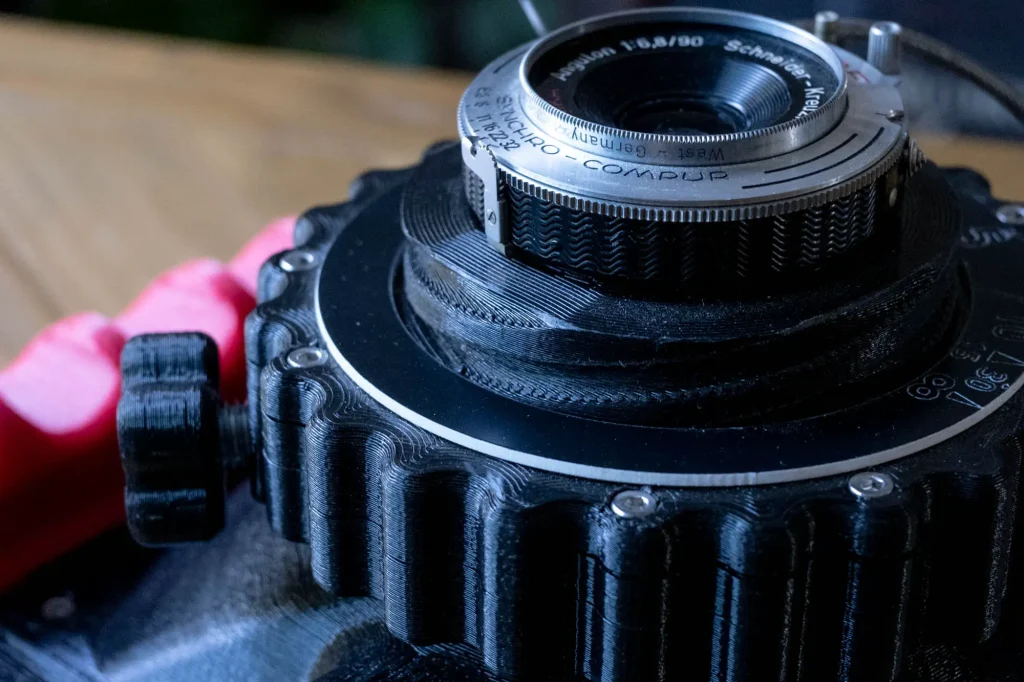
So what else is there to say? I suppose if I was nitpicking I might point out that the helical isn’t the smoothest I’ve ever used, but then I wasn’t expecting it to be, it’s made of 3D printed plastic. There’s also no clever mechanism for holding the focusing screen in place. Instead, it’s held on with elastic. But again, this is a very simple camera design, so really I wasn’t expecting anything more than… and not only that, it’s actually perfectly effective at holding the the dark slide very firmly in place. I also didn’t suffer any light leaks like I did when I shot the other day with my early Chroma (though, I should add, I’m pretty certain now that this was user error).
Home developing (again!)
The day after shooting, I unloaded the film into my MOD54 and loaded the tank. I then went to get the Cinestill DF96 from where I’d stored it under the kitchen silk and found it to have some sediment. I posted a photo on twitter and Cinestill were very quick to offer some good advice about testing before using it on my actual photos. After reading a few reassuring comments from others on twitter suggesting that it would probably be fine, I just filtered it with an old sock and cracked on. And guess what? They came out great!
The results
Not the greatest photos I’ve ever taken, but they’re pretty good all things considered. My 90mm Angulon continues to demonstrate its shortcomings into the corners, even stopped down, but actually – especially for its age – it’s not too bad at all.
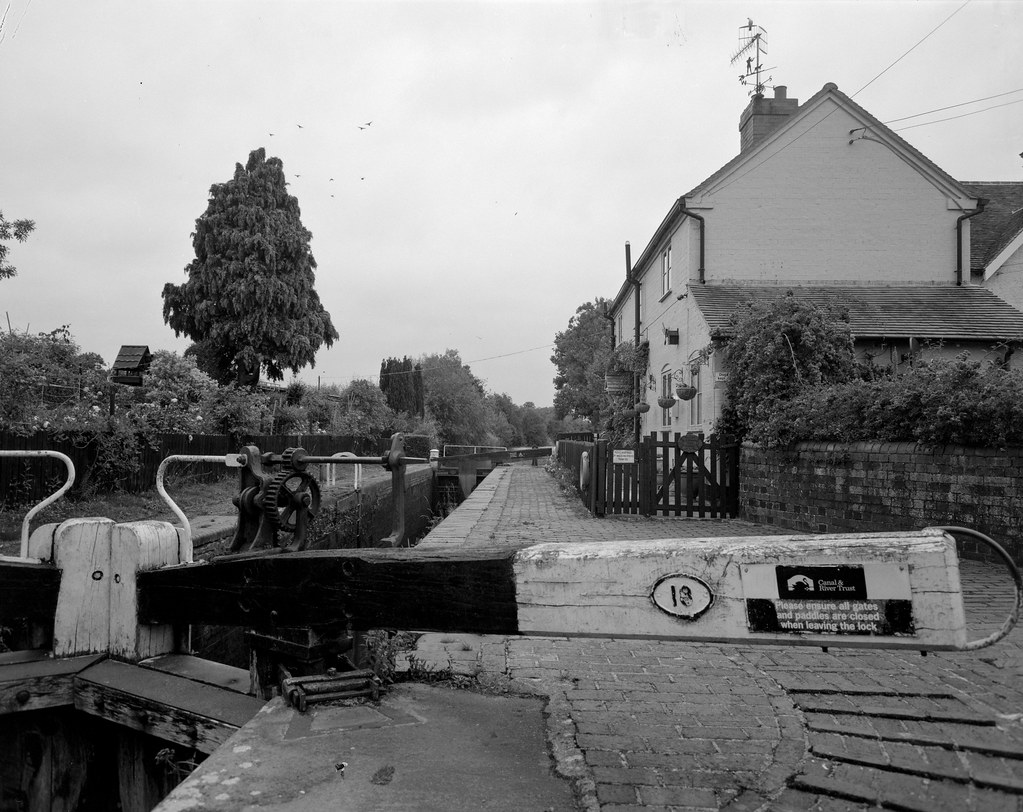
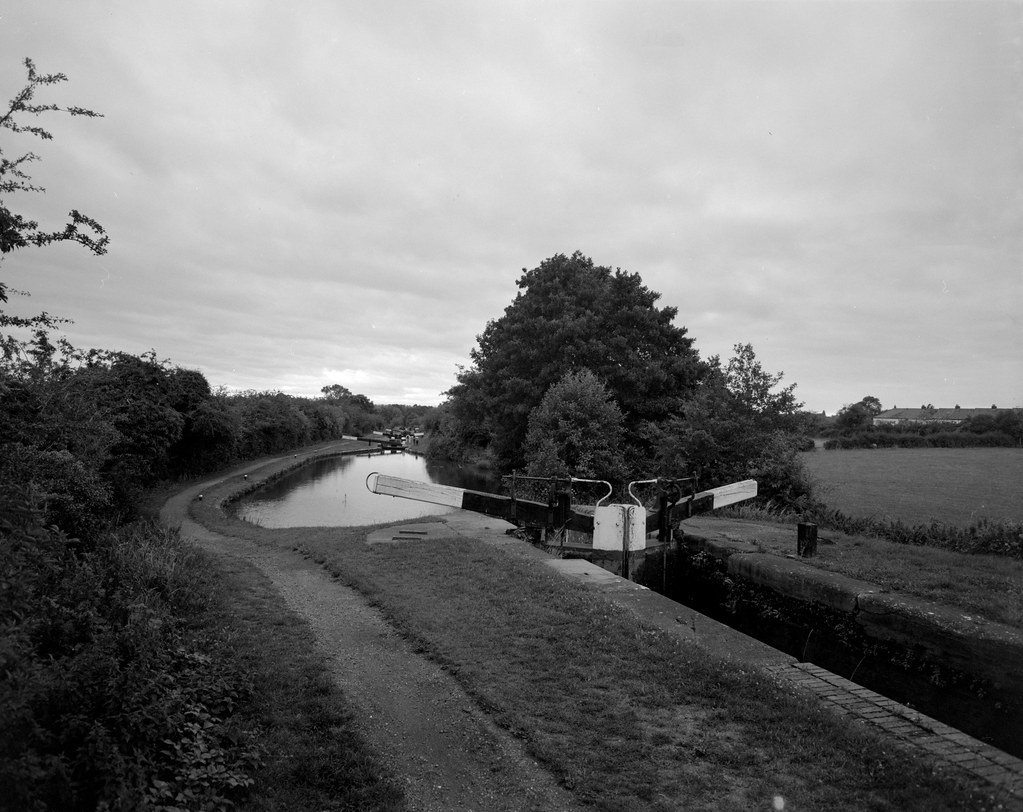
I also fell foul of the shade under this big tree. I did think about opening up the aperture, but in the end, I couldn’t be bothered. I just wanted to snap… and I quite like the look in the end anyway.
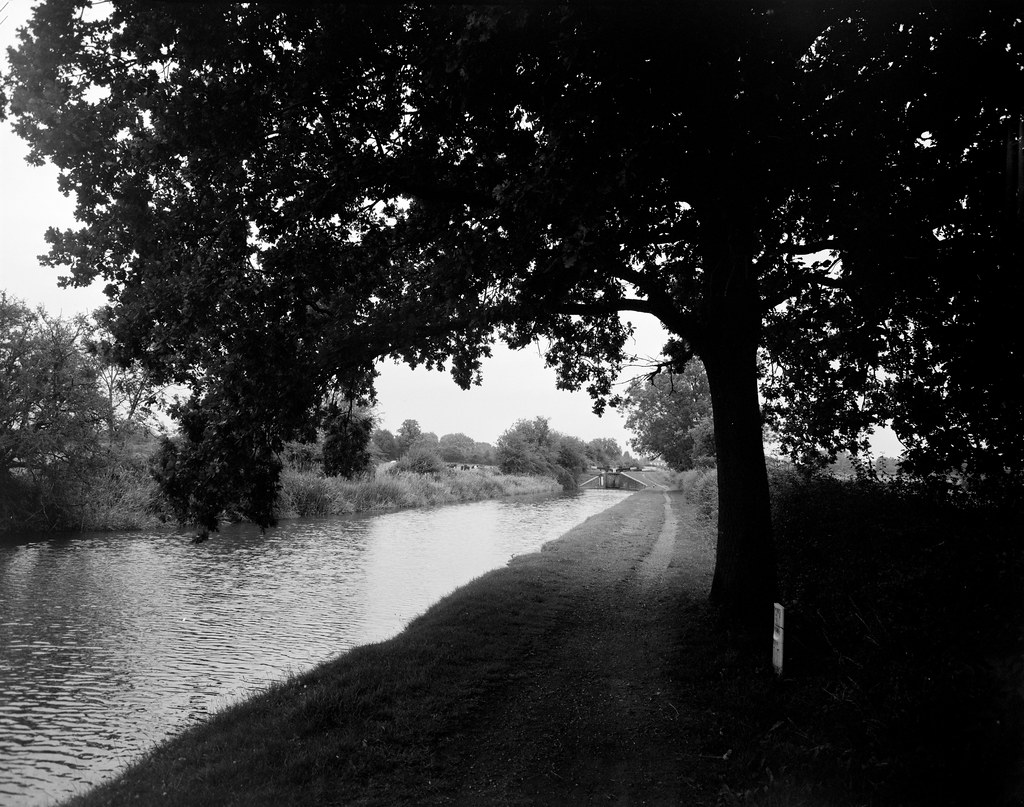
And if anyone can tell me what i have done here, I would be all ears…
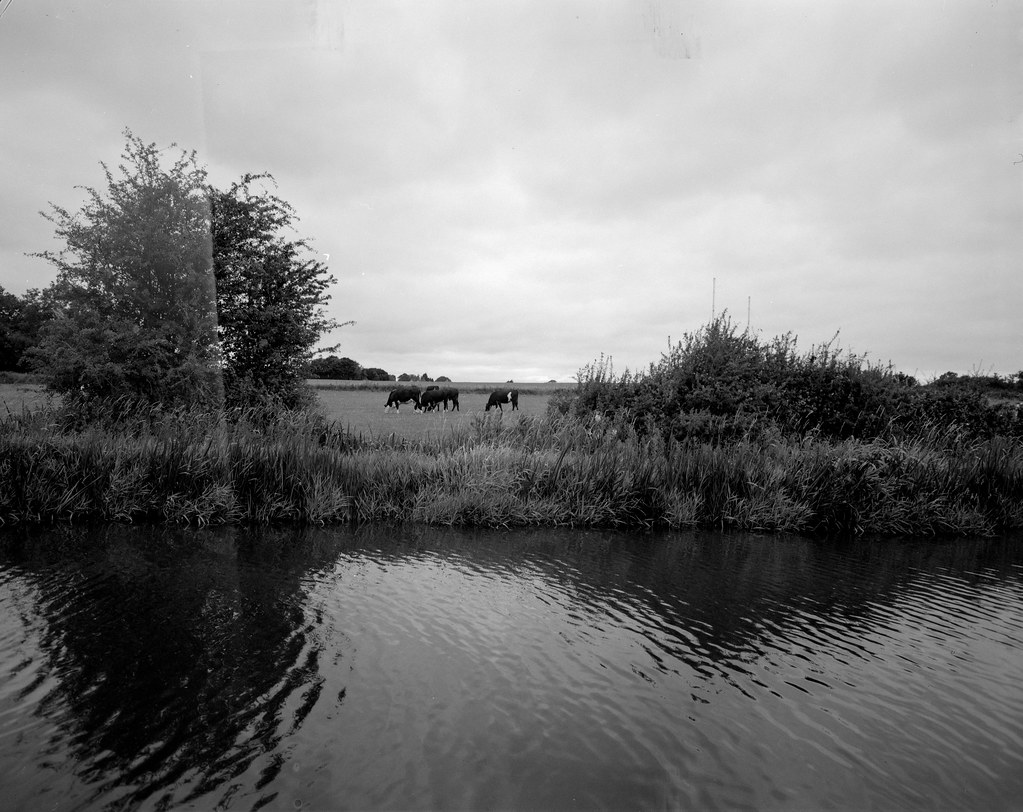
Final thoughts
This ability to just snap – or more the near-inability to do much else – really is the beauty of the Cameradactyl OG to me. It’s simple, in fact it’s so simple it practically forces a simple mindset. Large format photography is something that seems from the outside to be challenging. There are plenty of grey-beard-stroking bad-hat-wearing forum-dwellers out there who will – given any opportunity – try and build on that notion with talk of Scheimpflug principles, bellows extension compensation and the like too.
But like any area of photography, there is always a great place to start a journey and the Cameradactyl OG makes for a great entry into large format photography to my mind. The focusing screen that came with mine could certainly be better, but aside from that – not only is it very simple and relatively cheap to use alongside products like the MOD54, Cinestill DF96 Monobath, and (to plug my own thing) pixl-latr – it can be used to shoot large format film without feeling overwhelmed by complexity.
The Cameradactyl OG’s simple design helps force a simplistic approach to the medium that, for me at least, has made shooting the format a lot more compelling as a beginner. It’s also helped break down some of my wedged-in notions about the complexities of large format. Now I really feel like I’ve broken the back of shooting the stuff myself, by myself, it just doesn’t feel like such a big deal anymore!
And really, for me, this I why I think so highly of products like the Cameradactyl OG! This sort of much-more-affordable and much-more-accessible kit is helping to democratise large format photography. It’s pushing aside some of the conventional stuffy grey-beard ideas in favour of something more approachable by the new generation of film photographers. Gatekeepers be damned – whacky coloured 3D printed large format cameras for the win!!
If you like the look of the Cameradactyl OG you can buy one here!
Share this post:
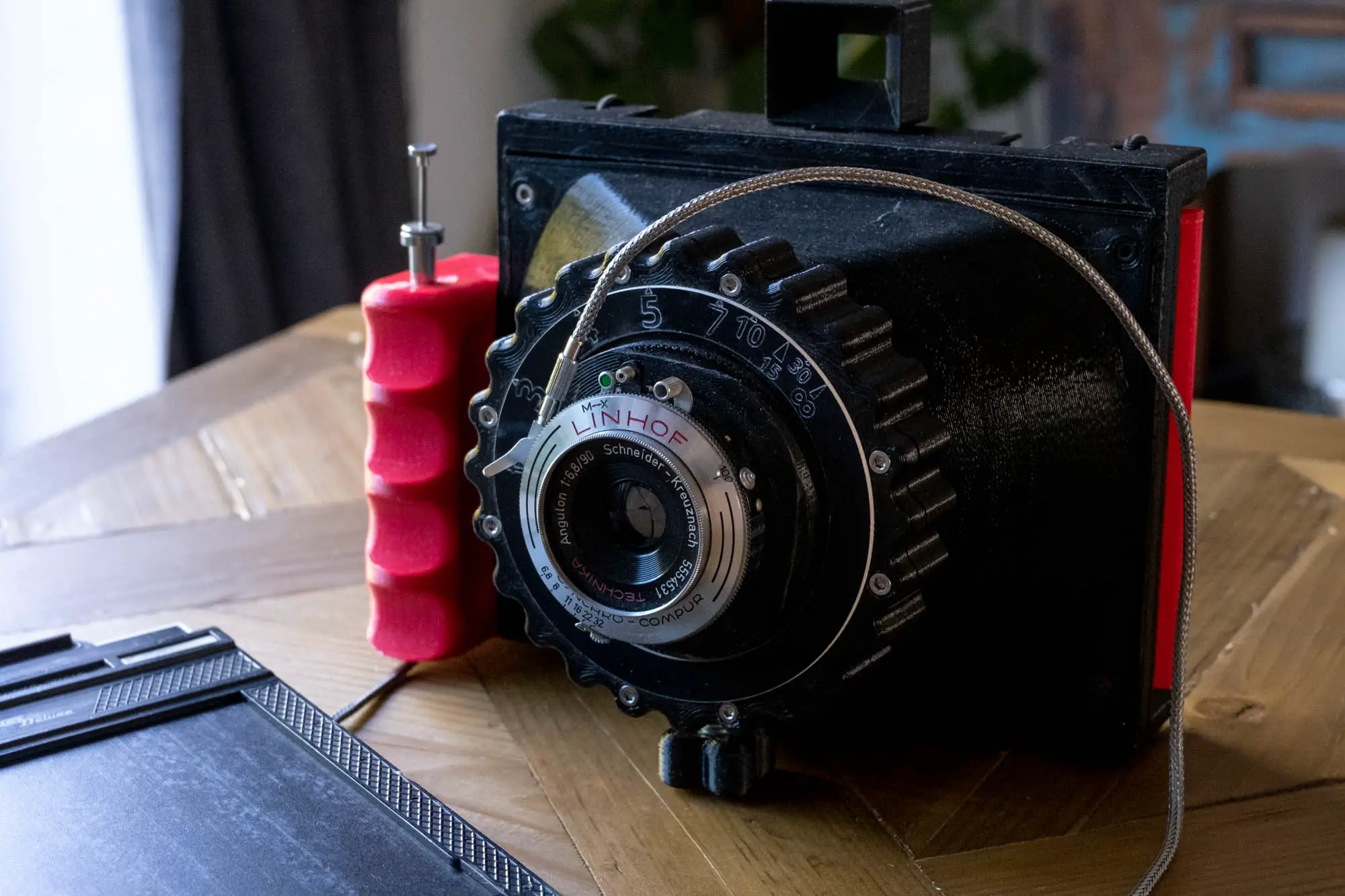



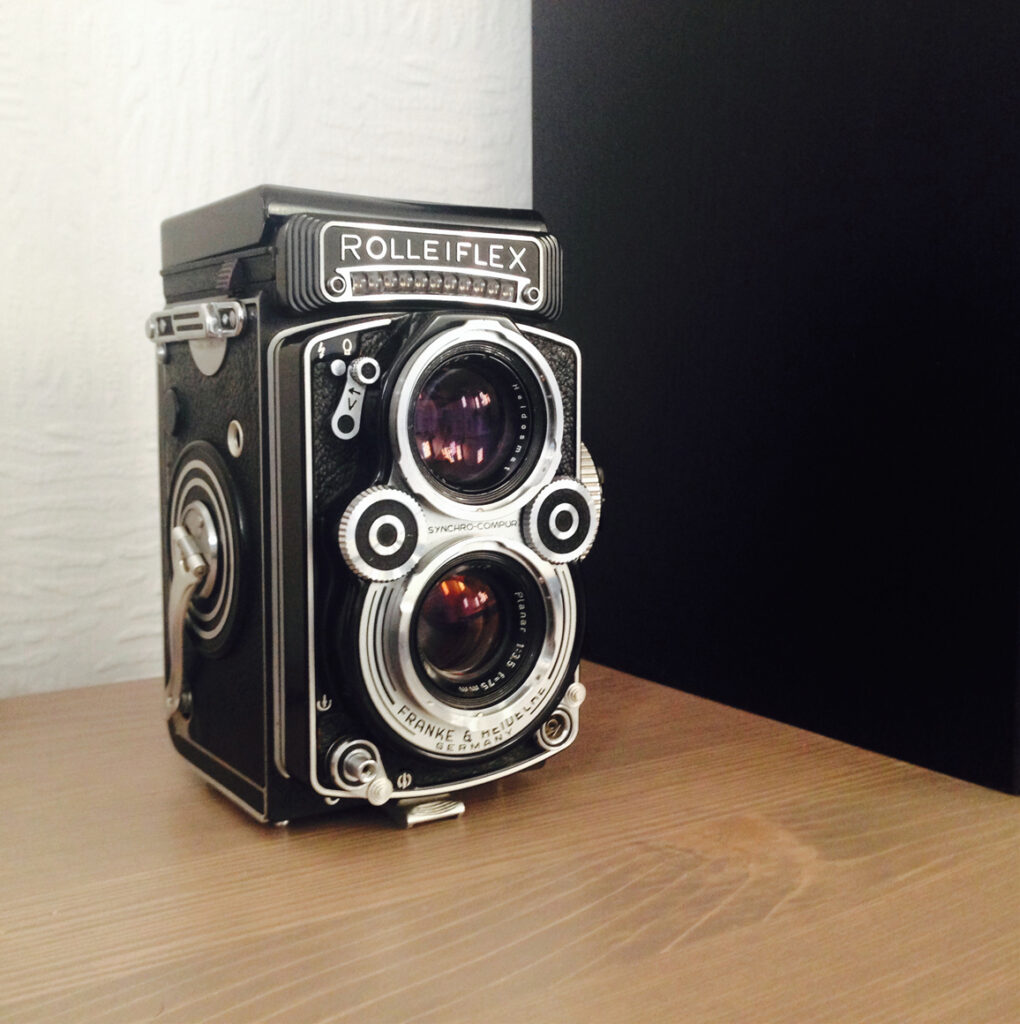




Comments
brian nicholls on Cameradactyl OG – 5×4 Large Format Snapshot Camera Review
Comment posted: 13/07/2020
Comment posted: 13/07/2020
John Squillace on Cameradactyl OG – 5×4 Large Format Snapshot Camera Review
Comment posted: 13/07/2020
Comment posted: 13/07/2020